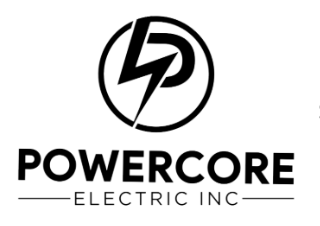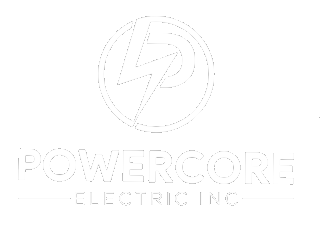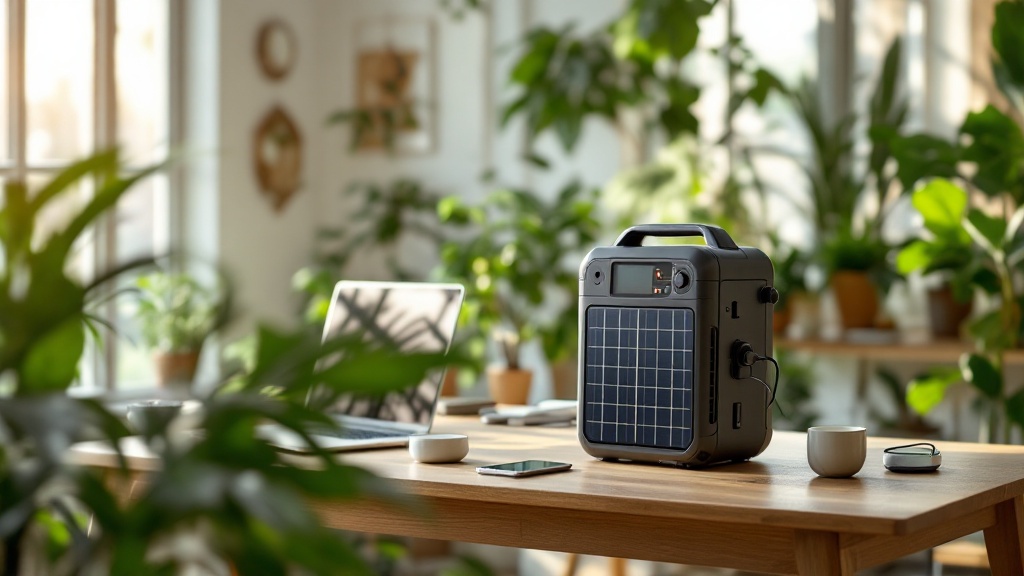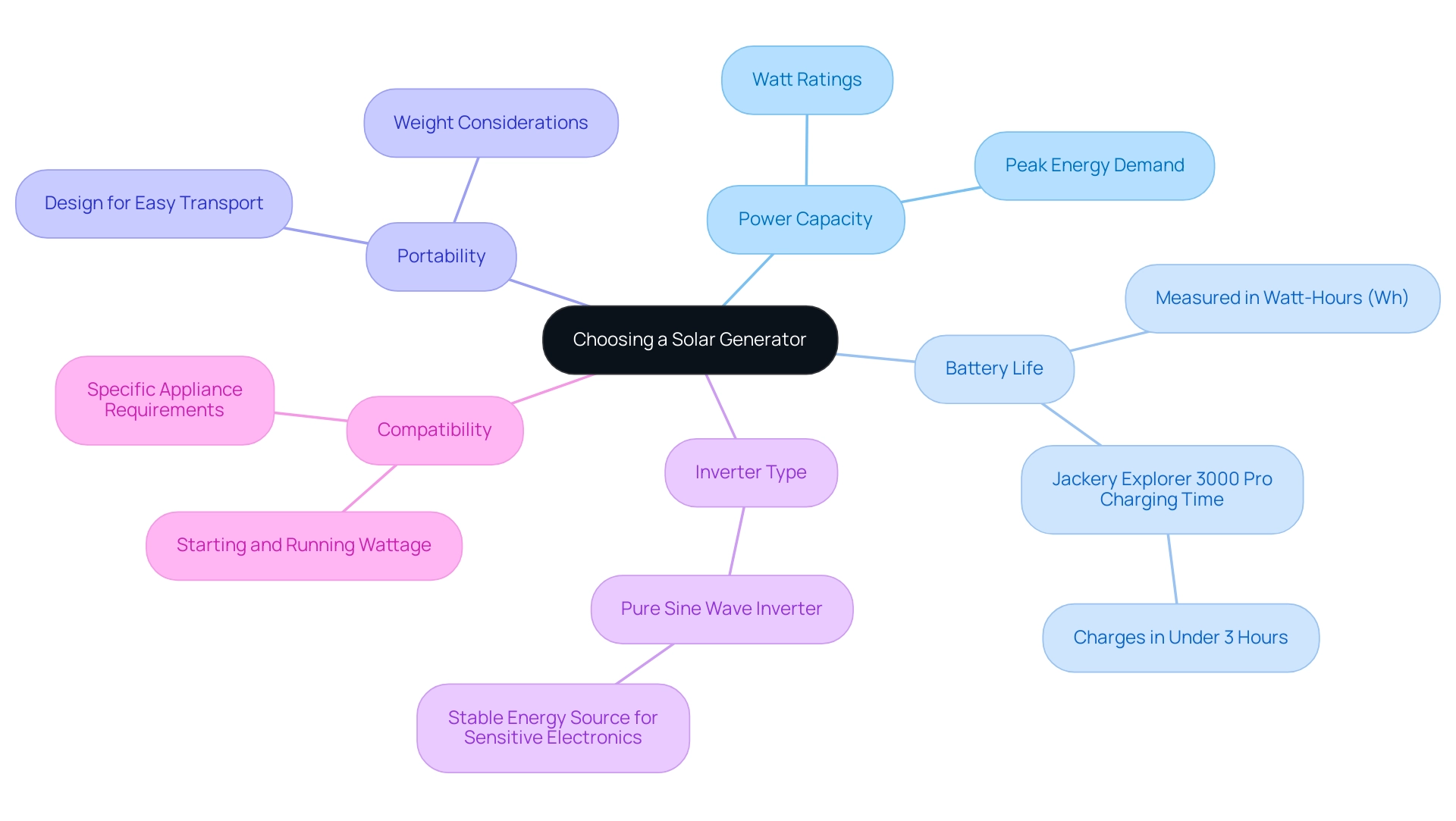Introduction
The growing interest in renewable energy has led many homeowners to explore the potential of solar generators as a sustainable power solution. As energy needs continue to rise, understanding how these systems can fit into daily life becomes crucial. Whether it’s powering essential appliances during an outage or providing energy for outdoor adventures, solar generators offer versatility and eco-friendliness.
This article delves into the ins and outs of solar generators, including:
- Determining if they can power an entire home
- Selecting the right model
- Ensuring optimal performance
With practical tips and insights, homeowners can confidently navigate the world of solar energy and make informed decisions that benefit both their households and the environment.
Can a Solar Generator Power Your Entire Home?
Certainly, a sunlight-based device can energize your whole house! However, whether it completely satisfies your requirements depends on your power usage and the machine’s capacity. Most residential photovoltaic systems possess a power rating in watts, which shows how much electricity they can provide at any moment.
For tenants, contemplating portable renewable energy sources or alternatives that do not necessitate permanent installation may be optimal. To determine if a solar generator that can power a house is suitable for your home, start by calculating your total power usage. Simply add up the wattage of all the appliances you want to run simultaneously.
For instance, if your refrigerator uses about 700 watts, your television draws 200 watts, and your lights add another 100 watts, your total demand would be around 1,000 watts. It’s worth noting that almost all U.S. homes (99%) have a refrigerator, with the average operating cost for this appliance being around $87, underscoring its significant energy consumption. The demand for residential electricity has surged from 0.1 trillion kWh in 1950 to 1.5 trillion kWh in 2022, highlighting the growing need for efficient energy solutions.
To ensure you have a dependable power supply during outages or when living off the grid, choose a solar generator that can power a house with a capacity that comfortably exceeds your total wattage. Furthermore, tenants in Southern California may gain from government initiatives that offer financial incentives for renewable solutions, facilitating investment in these environmentally friendly choices. As the U.S. Department of Energy advises,
- “If you don’t plan to use the fireplace at all, seal and plug the flue completely,”
reinforcing the importance of energy efficiency and careful planning.
This way, you can rest easy knowing are covered and you’re making a sustainable choice that benefits both your home and the environment!
Key Factors to Consider When Choosing a Solar Generator
When it comes to choosing the ideal solar generator that can power a house for your home, especially if you’re eco-conscious and residing in Long Beach, several key factors can make all the difference. Let’s break them down:
- Power Capacity: Start by looking for devices rated in watts. It’s essential to select one that can manage your peak energy demand, ensuring you won’t be left in the dark during crucial moments.
- Battery Life: Consider how long your power source can operate before it needs a recharge—this is measured in watt-hours (Wh). For example, the Jackery Explorer 3000 Pro impressively charges in under three hours from a standard outlet, making it a reliable choice for quick power needs.
- Portability: If you’re planning on using your device for outdoor adventures or during emergencies, think about its weight and design for easy transport. A lightweight model can be a game-changer when you need to move it around.
- Inverter Type: It’s important to check whether your device features a pure sine wave inverter. This is especially vital if you’re supplying sensitive electronics, as it guarantees .
- Compatibility: Lastly, ensure the device can power the specific appliances you rely on. Take note of both the starting and running wattage for each device to avoid any surprises.
In the words of a renewable power specialist, “The potential for what may come next, though, is truly mind-blowing.” By considering these elements and utilizing extensive knowledge from case studies such as ‘Your Guide to Selecting the Most Suitable Power Source for Home Use,’ you can assuredly select a solar generator that can power a house, fulfilling your requirements while reinforcing your dedication to a sustainable way of living. Additionally, consider brands like POWEREPUBLIC and Goal Zero, which exemplify a balance between performance and sustainability, ensuring you remain eco-conscious without compromising on your energy needs.
For a deeper understanding, examine case studies that demonstrate successful energy-producing device implementations in residential environments.
Exploring Different Types of Solar Generators
When exploring solar generators, you’ll encounter two main categories tailored to different needs:
-
Portable Solar Generators: These compact and lightweight units are ideal for outdoor adventures like camping or as convenient backup energy during emergencies. While they typically offer lower energy capacities, their portability and quick setup make them a favorite among eco-conscious homeowners.
For example, the Oupes charges at an impressive rate of nearly one watt per dollar spent, making it an economical choice. However, be aware that some portable options may have limitations. The Yeti 200X + Nomad 50 Solar Generator, while lightweight and easy to carry, only offers a usable battery capacity of 65% of its 187 watt-hours and is one of the slower chargers.
It may not be the best fit for those requiring fast charging or higher capacities.
-
Whole-House Solar Generators: These larger systems are a type of solar generator that can power a house, offering significantly higher capacities to supply energy to your entire home. They usually need expert setup to blend smoothly with your home’s electrical system, especially when integrating a solar generator that can power a house, ensuring dependable service during outages.
The Jackery Explorer 300 is an excellent example in this category, with a storage capacity of 293Wh and a weight of just 7.1 lbs. While it’s economical, it’s essential to mention that it lacks certain features such as a built-in flashlight and has a slower input capacity.
As you contemplate , storage space is another crucial aspect since multiple energy stations and panels can take up significant space. As Laura Lancaster points out, ‘The Bluetti AC60 is one of the only power stations I’ve tested that is rated to fully protect against dust and water jets, i.e., rain.’ This emphasizes the significance of selecting a generator that not only fulfills your energy requirements but also offers durability and protection.
Furthermore, it’s crucial to investigate government programs that may provide incentives or rebates for , making it more affordable for renters. Cleaning services for solar panels can also be beneficial in maintaining efficiency and prolonging the lifespan of your investment.
Ultimately, your choice will depend on your intended use. Are you seeking something portable for your next adventure, or do you need a robust solution for home power backup?
Assessing your particular power requirements and the space available for storage will influence your choice. Furthermore, evaluating battery options and understanding their specifications will help ensure you select the best solution for your power independence.
How to Connect a Solar Generator to Your Home
Linking a renewable energy source, such as that can power a house, to your residence may seem intimidating, but with a few simple steps, you can establish a dependable backup energy solution that fulfills your energy requirements. Let’s walk through the process together:
- Choose the Right Location: Start by placing your power source in a dry, well-ventilated area, away from direct sunlight and moisture. This helps maintain the longevity of your solar generator that can power a house.
- Link the Photovoltaic Modules: If your device utilizes renewable energy, ensure to connect the photovoltaic panels to the device following the manufacturer’s instructions. Correct connections are essential for effective power capture, which enables a solar generator that can power a house to store electricity from the sun for use when it isn’t shining.
- Power Connection: Use the appropriate cables to connect the machine to your home’s electrical system. This often requires a transfer switch to safely connect to your home’s circuit. Always prioritize safety; incorporating a solar generator that can power a house along with Victron Power for bus bars and adding fuses is a wise choice. With just 600 watts of solar, the system may only need to operate for 1 hour in the morning and 1 hour at night, making it an efficient solar generator that can power a house while meeting your energy needs.
- Test the System: After making the connections, give your device a test run. Ensure that it powers your appliances correctly and check for any error messages or issues. This step is crucial to ensure everything is functioning smoothly and helps in preparing for unexpected outages, particularly when relying on a solar generator that can power a house.
- Regular Monitoring: Keep a close eye on battery levels and performance. Monitoring these factors helps you catch any potential issues early, ensuring your system runs optimally. Routine upkeep is essential for maintaining a solar generator that can power a house in optimal condition and increasing its lifespan.
For optimal energy storage, consider investing in lithium-ion batteries, which offer higher efficiency and longer life cycles compared to traditional lead-acid batteries. Additionally, pairing your solar generator that can power a house with a high-quality inverter, such as the SMA Sunny Boy, can significantly enhance your system’s performance. If any of these steps seem unclear, don’t hesitate to reach out to a professional for guidance.
Remember, as Stan C. wisely pointed out, “If you are connected to the grid all the time – there are some ways to prioritize renewable energy.” Taking these steps not only prepares you for unexpected outages, especially with the increasing frequency of disruptions due to extreme weather, but it also sets you up for sustainable living by utilizing a solar generator that can power a house. Additionally, understanding the function of power inverters is crucial for effectively utilizing your power system, as they convert DC energy generated by panels into AC energy for your home.
Maintaining Your Solar Generator for Optimal Performance
To keep your energy generator running smoothly and efficiently, here are some friendly tips to follow:
-
Regular Cleaning: Make it a habit to clean regularly. Dust and debris can block sunlight, reducing their efficiency. A simple wash every few months can make all the difference! As observed by specialists, even minor performance declines can build up over time, resulting in considerable production losses. In fact, researchers have created models to estimate dust buildup on solar panels, highlighting the significance of maintaining those surfaces clean not only to enhance power output but also to contribute to a more sustainable home.
Battery Care: Pay attention to your battery health and charge levels. Keeping an eye on these ensures optimal performance, and don’t hesitate to replace batteries when necessary to keep the energy flowing.
-
Routine Checks: Take a moment to inspect your connections and cables. Look for any signs of wear or damage, and tighten any loose connections. This little step can prevent frustrating power losses.
-
Software Updates: If your device has software, make sure to keep it updated. These updates often come with performance improvements and security patches, ensuring everything runs like a dream.
-
Store Properly: If you’re not using your device for a while, keep it in a cool, dry spot. This helps prevent potential damage and keeps it in top shape for when you need it next.
-
Professional Maintenance: Schedule monthly, quarterly, and annual maintenance with a qualified company for thorough inspections and repairs. This ensures that your system is always operating at peak efficiency. Remember, photovoltaic panels can be adjusted four to five times per year for optimal performance. Think about exploring creative cleaning services that employ advanced methods to guarantee your panels stay in excellent shape.
By adhering to these upkeep suggestions, you’ll not only prolong the lifespan of your solar generator that can power a house but also ensure it reliably meets your power requirements. Remember, a little attention goes a long way in keeping your home powered sustainably! Additionally, staying informed about government programs and innovative cleaning services can further enhance your solar energy experience.
Conclusion
Investing in a solar generator is a proactive step towards sustainable living, offering homeowners a reliable and eco-friendly energy solution. Throughout this article, key factors have been explored, including:
- The ability of solar generators to power entire homes
- The essential criteria for selecting the right model
- Practical tips for connecting and maintaining these systems
Understanding your energy consumption, selecting a solar generator with appropriate power capacity, and ensuring compatibility with your appliances are vital steps in making an informed choice. Whether opting for portable generators for outdoor activities or whole-house systems for backup power, each option has distinct advantages that cater to different needs.
Additionally, proper setup and regular maintenance can significantly enhance the efficiency and longevity of your solar generator.
Ultimately, embracing solar energy not only supports personal energy independence but also contributes positively to the environment. By taking the time to educate oneself and carefully consider options, homeowners can confidently transition to a more sustainable lifestyle, ensuring a brighter and greener future for themselves and generations to come.



